Why cashmere is so boycotted?
How have we gotten to the point where such an amazing fiber is so boycotted?
When you think about luxurious knitwear, wovens, but also scarves and blankets; cashmere is definitely one of the first, widely-coveted fibers that come to our minds.
However, in the last few years, this fiber has been under the spotlight for animal welfare and environment related issues; so much so that numerous brands worldwide have literally erased it from their collections, by recurring to similar fibers or using its recycled version.
The question is how have we gotten to the point where such an amazing fiber is so boycotted?
Here is where the two faces of Cashmere come out, make sure to read this blog to see them both.
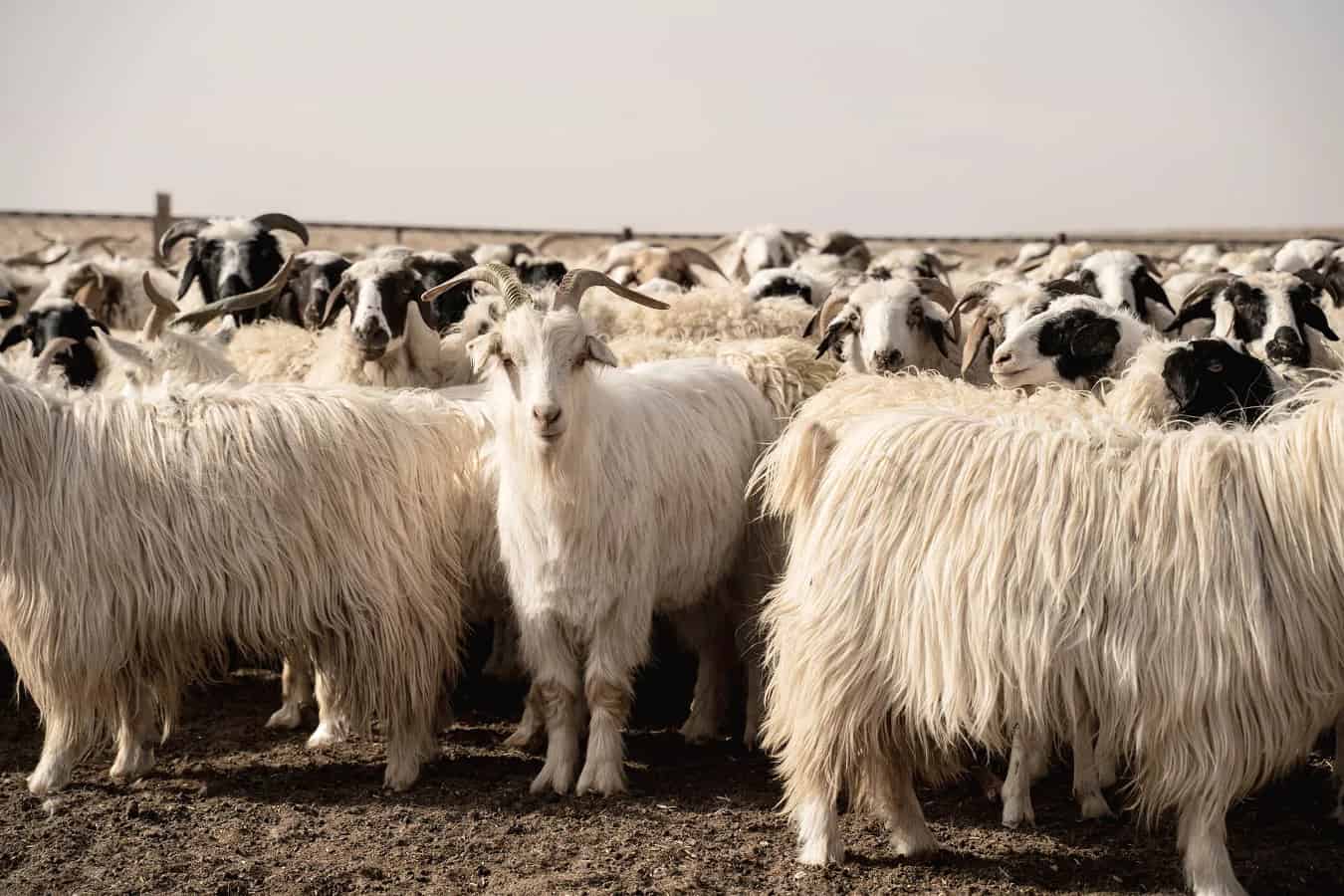
But first we need to understand what is Cashmere and where it is produced...
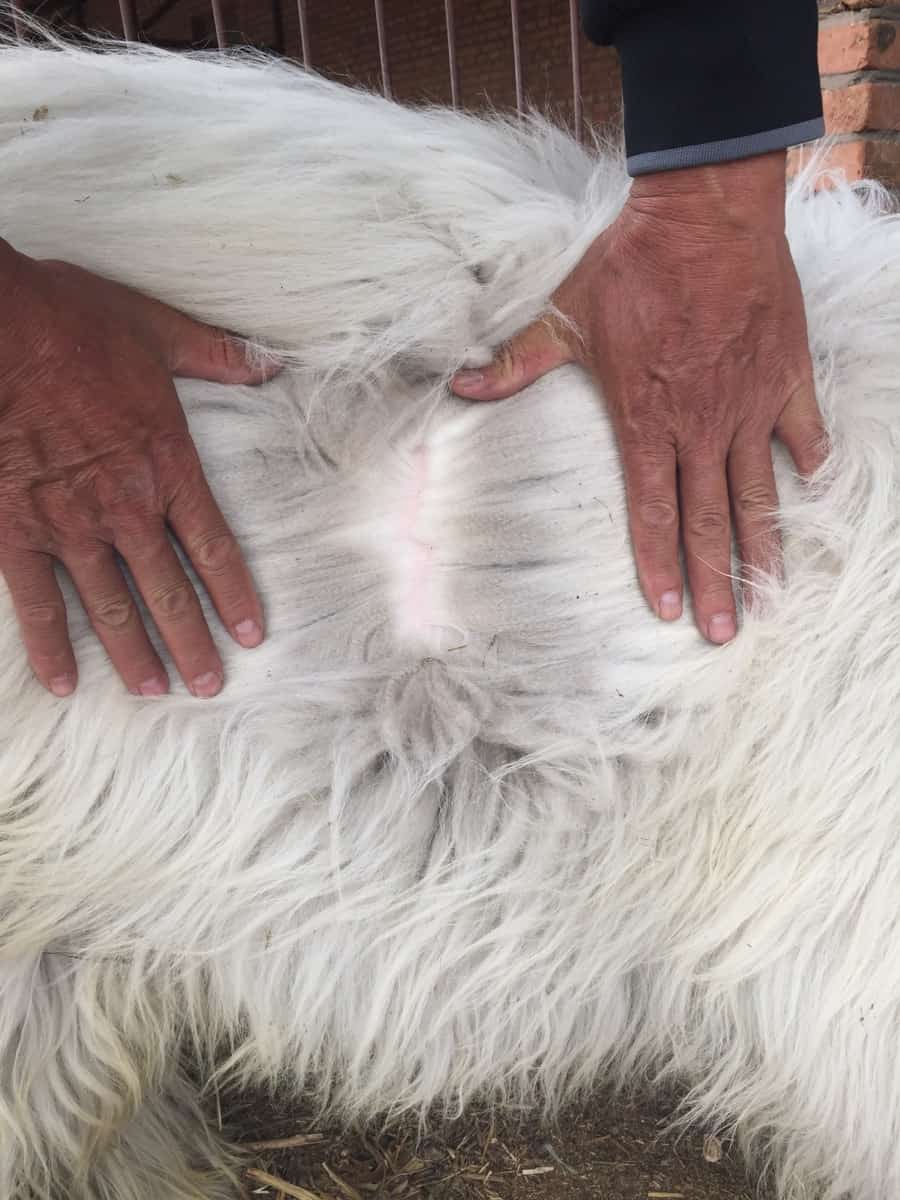
Cashmere, also known as “golden fleece” or “king’s fiber”, is acquired from the undercoat, or ‘duvet’, of the Capra Hircus, a specific type of goat found in the mountainous regions of Asia, including Afghanistan, Iran, China and Mongolia, with the last two leading the market. According to the latest Textile Exchange’s PREFERRED FIBER & MATERIALS MARKET REPORT, around 26,121 tonnes of greasy cashmere fiber were produced globally in 2021. Around 58% of the cashmere was produced in China, 38% in Mongolia, and the remaining in other countries. The breeding of cashmere goats in Mongolia and in the Kashmir region predates recorded history, going back as far as the 3rd century BC. This goat has always been bred by nomads, following a millenary tradition, which has been handed down from generation to generation. The latter is essential both for the right breeding of these animals and the safeguarding of the environment they graze on. On the one hand, thanks to the constant nomad movement to new lands, goats can grow and maintain a valuable coat. On the other hand, the soil is given time to regenerate. The Hircus goats are combed or sheared once a year, once the harsh winter is over and spring has arrived, right when they start to naturally shed.
Cashmere is forged by nature
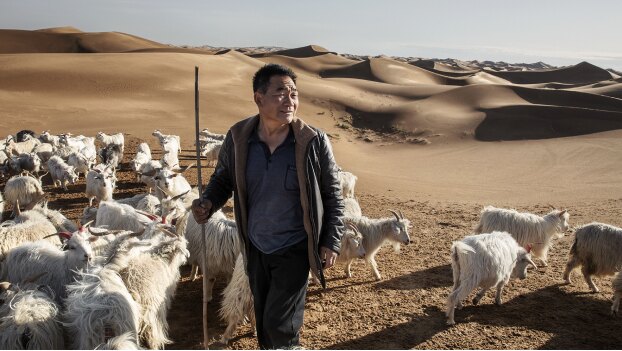
As for many other precious animal fibers, cashmere fibers’ exceptional characteristics are forged by nature. In fact, the Hircus goat has managed to survive in extreme habitats, featuring wide temperature fluctuations between seasons, with freezing, windy winters and hot, dry summers. This is the reason why it has developed an insulating undercoat consisting of thousands of particularly fine, smooth, soft and warm fibers, which are concentrated in a small area, under the dense and protextive outercoat, which allow the Capra Hircus to resist temperatures of -30°C.
It is extremely rare and expensive
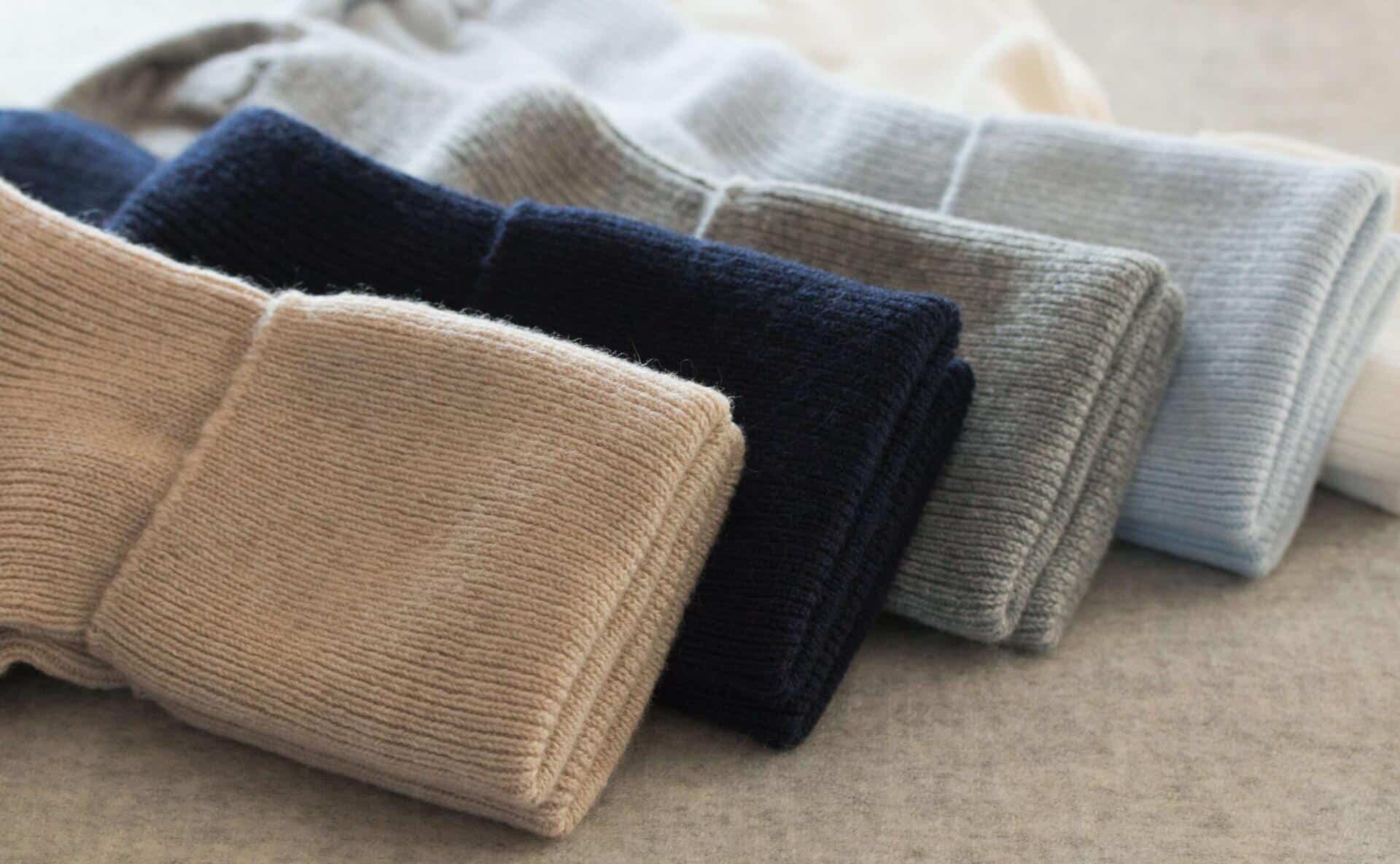
It is estimated that from each animal, only from 200 to 300 grams of duvet are normally acquired, with production-processes-related losses still to be considered. This means that it takes approximately 4 goats to get enough material to manufacture a sweater. Ultimately, its high-qualty, the small quantity of fibers obtained from a goat and the fact that – according to the latest Textile Exchange’s Preferred Fiber & Materials Market Reporta 2022 – cashmere represents just 0.01% of the entire global fiber market, makes it really rare and – obviously – expensive.
The positive face of Cashmere is given by its amazing features and circularity...
In fact, it is well known for its incredibly soft and warm handfeel, also enhanced by its light weight, its excellent breathability and an insulating capacity, which is said to higher than other animal fibers and makes it perfect to maintain a correct body temperature during both winter and summer. Cashmere is also durable and is always long-lived by consumers if – of course – maintaned well through an accurate care (Read more on How to take better care of wool garments). Thanks to its super fine fiber, it is extremely skin friendly and keep shapes well. Much like sheep wool, Cashmere is also hygroscopic, meaning that it absorbs water without feeling wet. Last but not the least, cashmere is also easily recyclable and its production is almost zero-waste, making it good for circular fashion – just like wool (Read more on 5 Reasons why wool is the circular fiber par excellence).
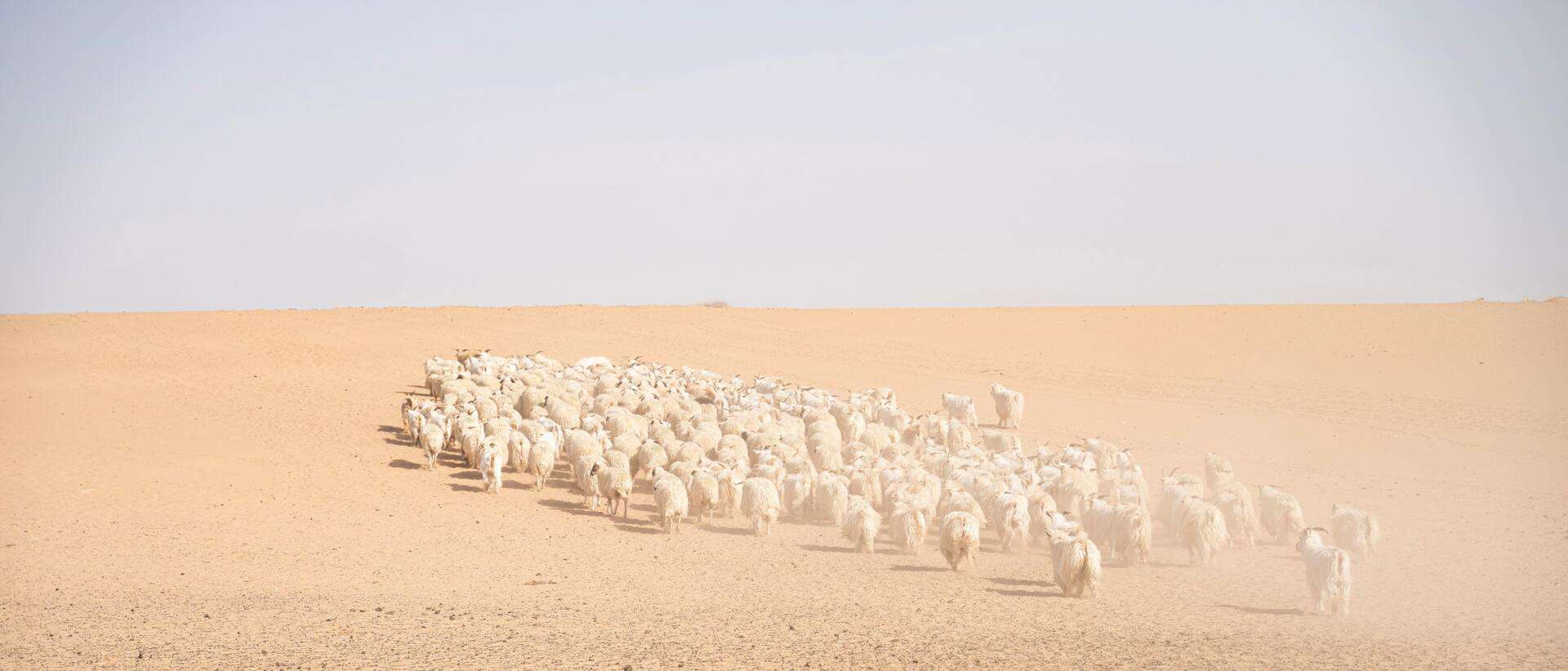
...While the negative face of Cashmere is given by its animal welfare, social and soil degradation issues
Due to its amazing features, in the last decades, cashmere has become more and more demanded by the global market. All this has pushed its cost down, caused many changes in breeding practices and has kind of altered the delicate, balanced relationship between goats, humans and the soil.
1) The desertification problem
Hircus goats eat a wider range of plants than sheep and it is estimated that they eat up to 10% of their body weight daily. The thing is they forage very aggressively and tend to consume the whole plant down to the root, literally “eliminating” it from the soil. Plus, their hooves pierce the soil and can damage topsoil and grass roots – preventing it from re-growing. All this is part of the animal’s DNA and it has always behaved like this, but when the number of goats is drastically increased and the land remains the same, it is obvious that the balanced cycle where they coexist will be broken. In fact, as the number of goats has grown from 4.3 million in 1985 to nearly 30 million in 2020, or seven times, the phenomenon of desertification has risen and is literally destroying the prairies of the Asian regions. According to data released by the Mongolian government, more than 50 percent of pastures have dried up. In 2016 more than 20 percent of pastures had been severely damaged, which is 13 percent more than just two years earlier. But that’s not it, with a higher demand, also intensive livestock farming has arrived, in which the mixing of livestock that is essential for regenerating the soil is lost: a certain number of Hircus goats should in fact be matched by a precise number of sheep in order to keep the soil fertile, because the former rip out the grass root, while the sheep do not. Unfortunately, this cohabitation is getting lost also among nomadic shepherds. This reality can be devastating for many nomadic herders, who feel they have no choice but to contribute to this destruction for the fashion system’s cashmere demand. Moreover, a study conducted by the Wildlife Conservation Society found that due to this phenomenon, wildlife icons from the Tibetan Plateau to Mongolia suffer – including endangered snow leopard, wild yak, chiru, saiga, Bactrian camel, gazelles, and other remarkable but already endangered species of remote Central Asia.
2) The animal welfare and social problem
Following an increased demand of this precious fiber, farmers and herders started to comb or shear goats more often [combing is reported to hurt the animal, whereas shearing is quick and painless when done by experienced shearers]. The problem is that these animals have just little fat on their bodies, and if their protective coats are shorn in midwinter before natural moulting, the vulnerable animals can die of cold stress. The increased fiber demand has also affected nomadic herders, who have to increase the size of the herd to maintain their income while prices are reduced. With the lowering of material costs, farmers also face the risk of being underpaid, a common problem in fashion.
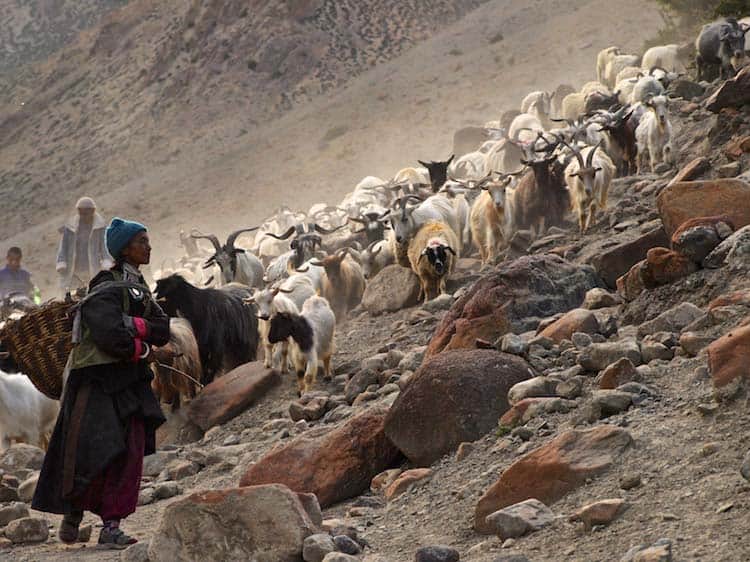
How is the industry trying to face the boycotting of cashmere?
Numerous brands have started to replace virgin cashmere with recycled cashmere, thus reducing a fiber demand that was too high and actually starting to encourage a more circular fashion, by recycling pre-consumer scraps and post-consumer garments. However, at the same time, Textile Exchange, a global nonprofit that creates leaders in the preferred fiber and materials industry, established the Responsible Cashmere Round Table in March 2019, with the aim to better understand the issues and opportunities on global cashmere production. Thanks to this, over two dozen global brands have signed a statement of support for the establishment of the Mongolia Sustainable Cashmere Platform (MSCP), a national-level umbrella mechanism with collaborative leadership and facilitated by the United Nations Development Program (UNDP). The Platform has four key objectives in its two-year Collection Action Plan:
- To formulate and implement a collective action plan that addresses the root causes limiting the sustainability of cashmere in Mongolia.
- To influence and harmonize government policy that ensures a strong and coherent legal and institutional framework for sustainable cashmere in Mongolia.
- To establish partnerships and coordinated investments and actions that accelerate current efforts.
- To position Mongolia as a global leader for sustainable cashmere.
After just a few years of systemic efforts, nowadays, out of all the cashmere that on the market, 17,4% is produced according to Agronomeset Vétérinaires Sans Frontiers (AVSF), THE GOOD CASHMERE STANDARD® (GCS), Responsible Nomads (RN), Sustainable Fiber Alliance (SFA), Wildlife Conservation Society (WCS); while the remaining 83% is still produced conventionally.
As for all the evolutions in the fashion industry, change and improvents take time and a global effort. The hope is that, as the years pass, cashmere fibers production will be possible and – most importantly – in line with the animals’ and environment’s natural life cycle.
At Manteco, following our circular DNA, we have always used recycled cashmere fibers for our fabrics and Jerseys
After decades in the fashion world, in 2018, we have created the Manteco Academy project, through which we give webinars, in-person lessons and workshops on eco-design, circular economy and sustainability to numerous fashion schools, technical universities and brands worldwide. Thanks to this educative commitment and our heritage, we are often invited as guest speaker at events, panels, podcasts and conferences about sustainable fashion and circular economy.

